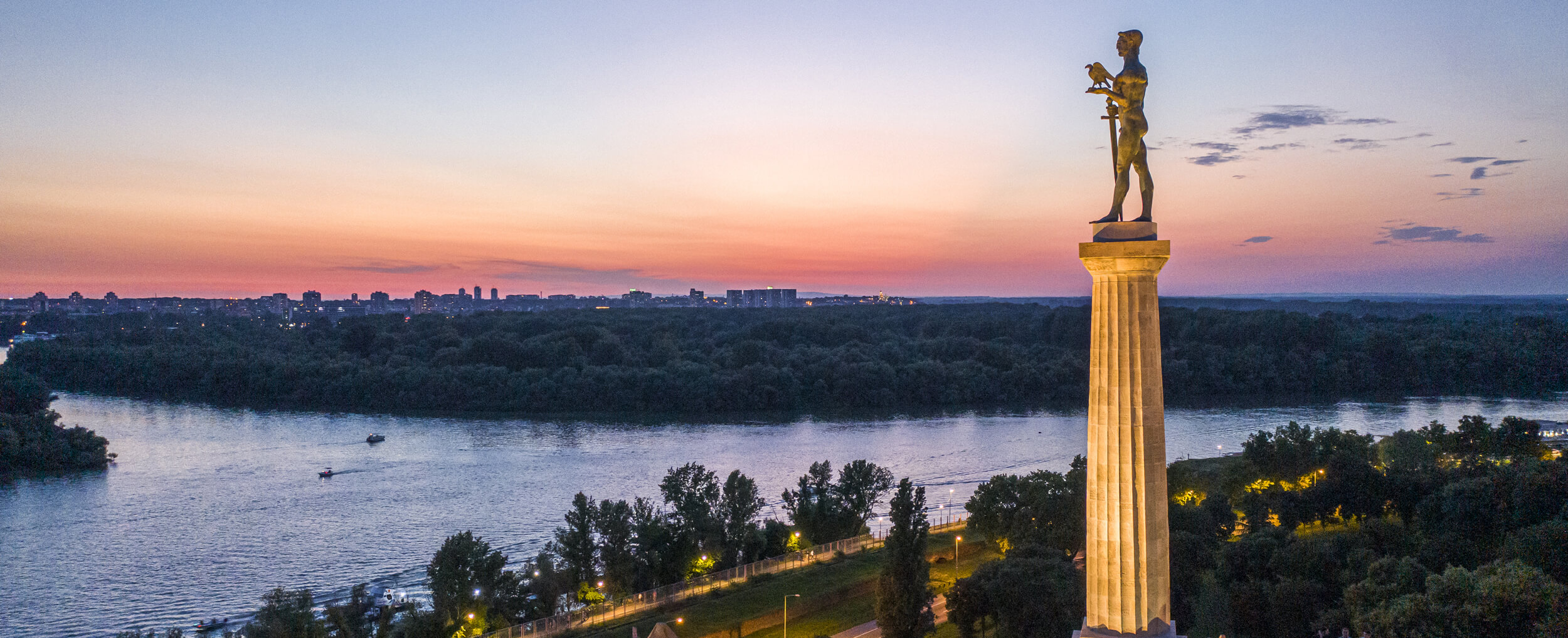The scale model of the castle of Despot Stefan Lazarevic, the work of the sculptor Kolja Milunovic, is placed approximately in the centre of the medieval castle. This part of the fortress underwent the greatest changes and the greatest destruction over time, especially at the end of the 17th century. During the Turkish siege, a …
Continue reading “Scale Model of Despot Stefan Lazarevic Castle”
The ‘Victor’ monument is certainly the most recognisable symbol of Belgrade. It was created in the years before the First World War, but its formation took an unusually long time. The monument honouring the victory of the Serbian army in the Balkan wars was originally conceived as a fountain, which was to be placed in …
Continue reading “The Victor monument”
Close to the former entrance to the castle of Despot Stefan Lazarevic, near the remains of the drawbridge, a memorial was erected remembering the biggest and most glorious battle in the history of Belgrade, when the city acquired the famous epithet Bulwark of Christendom. It was at this place, on the bridge, during the night …
Continue reading “Memorial Plaque Dedicated to the Defence against Turkey in 1456”
The fountain of Sokollu Mehmed Pasha is the only endowment of this famous Turkish vizier in Belgrade. At the time when it was built, between 1576 and 1577, this part of the fortress looked completely different and so the fountain was located in a moat, under the bridge that led to the main gate of …
Continue reading “Mehmed Pasha Sokolovic Fountain”
The Defterdar Gate is located opposite the Sahat Gate, almost in the middle of the northwestern rampart of the Upper Town. The gate gained its name in the 18th century — defterdar is a Turkish word meaning finance officer or treasurer, especially a provincial accountant general. At the site of the Defterdar Gate in the …
Continue reading “Defterdar`s Gate”
The Zindan Gate was built in the middle of the 15th century for better protection of the East Gate, which at the time was the main entrance to the city. The gate is actually a small pre-fortification — a barbican consisting of two massive semicircular towers, between which there is a passage. The area towards …
Continue reading “Zindan Gate Complex”
The Leopold Gate is located in the oldest part of Belgrade’s bastion fortifications and its construction began immediately after the Austrian conquest of the city in 1688. The gate was not completed immediately, but a few years later, during the works led by Andrea Cornaro. The current monumental baroque facade is actually younger than the …
Continue reading “Leopold Gate”
It is located between the gate of Carlo IV and Nebojsa Tower. It leans against the remains of northeastern rampart of the Lower Town. It was built in the second half of the eighteenth century and it is made of stones and bricks. Upon the siege of the Tower, Karadjordjevic’s insurgents used this building as …
Continue reading “Military Kitchen”
Archaeological excavations have revealed a part of the marble lintel of the Metropolitan Church of the Assumption of the Mother of God with the founder’s inscription of Despot Stefan Lazarevic. Apart from the inscription, no other remains of the church were found, which was destroyed at the beginning of the third decade of the 18th …
Continue reading “Remains of the Metropolitan`s Court”
The gate of Charles VI is located within the medieval northeastern ramparts of the Lower Town and it was named in memory of the Austrian Emperor Charles VI, during whose government the city was ruled by the Habsburgs for the first time. The military success of the Austrians in the fight against the Turks, that …
Continue reading “The Gate of Carlo VI”
This page uses cookies to provide you with the best user experience. If you continue to browse the page, you agree to the use of cookies.
I AGREE
READ MORE

